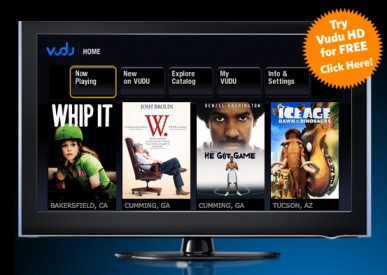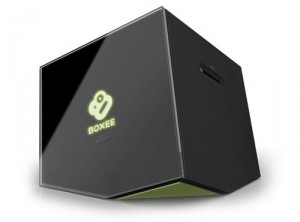 After rumors circulated in January that US retail giant Wal-Mart was eying the video-on-demand service Vudu, the New York Times is reporting that it’s a done deal. Still no official word from either company but Dan Rayburn via one of his sources says the ink has dried and that’s good enough for me. It’s also an interesting end to a pretty long story:
After rumors circulated in January that US retail giant Wal-Mart was eying the video-on-demand service Vudu, the New York Times is reporting that it’s a done deal. Still no official word from either company but Dan Rayburn via one of his sources says the ink has dried and that’s good enough for me. It’s also an interesting end to a pretty long story:
Vudu started as a feisty silicon valley startup, unfashionably entering the consumer hardware space with its own set-top and accompanying HD video download store. Whilst its offering received good reviews based on the UI, movies were relatively expensive, as was the box itself, and I was always skeptical that consumers in great numbers would pay for hardware just to enter the store. The Vudu box was a one trick pony, providing a store front to the company’s content, or that’s how it felt to me. Competing consumer set-top boxes seemed to offer a lot more.
Eventually, Vudu opened up a little, supporting services other than its own, and lowered the price of its entry level hardware, but that still didn’t seem to be cutting it. Continue reading »
 Back in August,
Back in August,  They were already known to be
They were already known to be  The
The  3UK’s CEO talks about how the network is planning to address its ‘legacy perception problem’ and why bidding for the iPad would be like trying to sign a premiership footballer
3UK’s CEO talks about how the network is planning to address its ‘legacy perception problem’ and why bidding for the iPad would be like trying to sign a premiership footballer Now that the dust has settled and I’ve had time to gather my thoughts, here’s what I make of the iPad, Apple’s own take on the tablet computer.
Now that the dust has settled and I’ve had time to gather my thoughts, here’s what I make of the iPad, Apple’s own take on the tablet computer. Rudy De Waele (
Rudy De Waele ( We knew it was coming
We knew it was coming